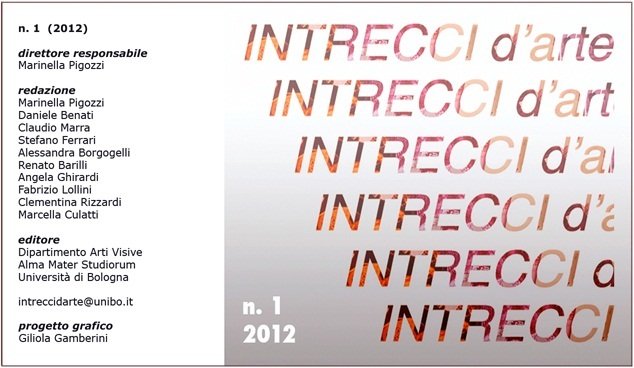The canon Angelo Comolli (1760-1794) and the comparison Raphael-Dürer
DOI:
https://doi.org/10.6092/issn.2240-7251/2652Keywords:
Angelo Comolli, Raphael, Dürer, Anton Springer, XVIIIth centuryAbstract
The article is about the canon Angelo Comolli and his Vita inedita di Raffaello da Urbino, published for the first time in Rome in 1790. In this biography, it is very interesting to study the comparison between Raphael and Dürer.
We don’t know much about the life of the canon Comolli: we can find some information about it in a letter (Turin, Civic Library) written by Fermo Comolli, his brother.
In his Vita, Comolli says that he is publishing with notes an anonymous biography of Raphael, written before Vasari and found in a XVI century manuscript coming from the Certosa di Pavia. On the frontispiece of 1790 edition there is the representation of a medal (in that year kept in Rome, in the collection of monsignor Giuseppe Muti Papazzurri early Casali, now in London, British Museum) with a portrait of Raphael on the obverse, and on the reverse a Diana Polymastes, symbol of the generative strenght of Nature and a sentence from Bembo’s distich for Raphael’s tomb: Timuit quo sospite vinci; an iconography that symbolizes the contest between Nature and the art of Raphael.
Nowadays we know that this biography is a forgery, that follows Vasari’s Vite; Anton Springer demonstrated it very carefully in 1882. But Comolli’s Vita had some success: it was published again in Rome in 1791; in 1817 it was translated into German by the archivist Maximilian Prokop von Freyberg, and published in Munich; Ingres was inspired by Comolli’s Vita when he painted two scenes taken from Raphael’s biography (Raphael and the Fornarina and The betrothal of Raphael); Gaetano Milanesi, in his edition of Vasari’s Vite of 1879, still thought of Comolli’s Vita as a genuine document.
The canon Comolli shows himself as a scholar, in the notes of his Raphael’s biography and in his other work, the Bibliografia storico-critica dell’architettura civile ed arti subalterne, published in Rome in the same years. The comparison between Raphael and Dürer is just in a note to the Vita. Comolli emphasizes their reciprocal high esteem, almost a friendship, and wants to list and explain a series of strange correspondences between their lives: the dates of their deaths (the 6th of April, in 1520 Raphael and in 1528 Dürer), the two new inscription placed on their graves about 150 years after their death (an inscription by Carlo Maratta for Raphael’s grave and one by Joachim von Sandrart on Dürer’s), and women as cause of their deaths.
The connection between Raphael and Dürer goes back, in Italy, to Vasari’s Vite and Dolce’s Dialogo della pittura, and the idealized comparison between them will be succesful in Germany, during the Romantic Age.
Downloads
Published
How to Cite
Issue
Section
License
Copyright (c) 2012 Stefano Onofri
The copyrights of all the texts on this journal belong to the respective authors without restrictions.
This journal is licensed under a Creative Commons Attribution 4.0 International License (full legal code).
See also our Open Access Policy.
Images and photographs may have different terms of license.
In making material available online the Journal acts in good faith. Parties who have questions or who wish to contest the use of specific works may contact the Editor in chief.
Metadata
All the metadata of the published material is released in the public domain and may be used by anyone free of charge. This includes references.
Metadata — including references — may be re-used in any medium without prior permission for both not-for-profit and for-profit purposes. We kindly ask users to provide a link to the original metadata record.






